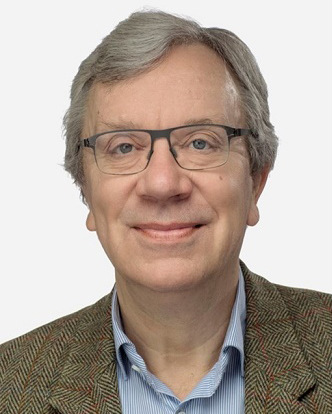A Superpower Material Scientist
This year, Professor Antti-Pekka Jauho celebrates his 40th anniversary as a researcher in Denmark and continues as professor emeritus. He has a long, impressive career behind him, and for the last ten years, he has been the leader of the DNRF Center for Nanostructured Graphene (CNG) at DTU.

Graphene is a material that is 100 times stronger than steel but is just one-atom thick. It is also flexible, transparent, highly conductive, and seemingly impermeable to most gases and liquids. So far, graphene cannot be produced in large quantities, but scientists around the world are working hard to make it possible to upscale it for industrial production.
One of the researchers working to make this possible is Antti-Pekka Jauho, who, for more than a decade, has been working to take the first steps in the development of this material at the Center for Nanostructured Graphene.
The center will close, as planned, this year, but Jauho can look back on some fantastic years of research at an international level.
“We’re among the big boys, and the center is really a gamble that has paid off,” he said.
The idea for the Center of Basic Research began to take shape when Jauho worked as a visiting professor in Finland in 2007-2010. There he had time to think about and submit an application to the Danish National Research Foundation, which eventually led to his opening the Center for Nanostructured Graphene in 2012 with a grant that ran until this year.
“Graphene is quite an ordinary material, Jauho answers when asked how he found inspiration for the DNRF center.
“But if you take a second look, it is a very interesting material, and the potential for graphene is enormous. For example, you can protect metal so that it does not rust; you can use it in the car and aircraft industry. You can develop much more efficient batteries, filter salt from water, or use it to detect bombs on an airplane. One just needs to figure out how to produce it in large quantities, but that’s up to the engineers. Here at the DNRF center, we have taken the first steps toward understanding the material and its nature.”
When the Center for Nanostructured Graphene closes, Jauho can look back at a time when researchers have contributed high-impact research, but young researchers have also been trained to use their knowledge in many different contexts.
“I have trained about 30 Ph.D.s in my career, some of them in the CNG center. In addition, I have trained engineers and others at many universities and supervised many post-docs. Some of them have also become researchers, and today, at least ten are professors in Denmark, Finland, Germany, Spain, and Sweden. So we have created a future for our research and for several of our young scientists – and that I am proud of,” said Jauho.
He also said that there are not many countries in the world that, like the Danish National Research Foundation, support basic research with so much money and which focus so much on new and wild ideas.
“And that’s the very essence of a basic research center,” he believes. “You must dare to think big and a little crazy and be open to everything new, especially from the young scientists, as it is often they who make the new discoveries.”
Jauho has just turned 70 and is now entering a more guiding role as professor emeritus.
“I am happy and satisfied with what I have done. I still think research is fun and exciting, but now the time has come for the younger students to take over. It’s been a dream job and the DNRF center has taken up more space than I thought, but now I’m ready to spend my time with good research and to come and go as I see fit.”
